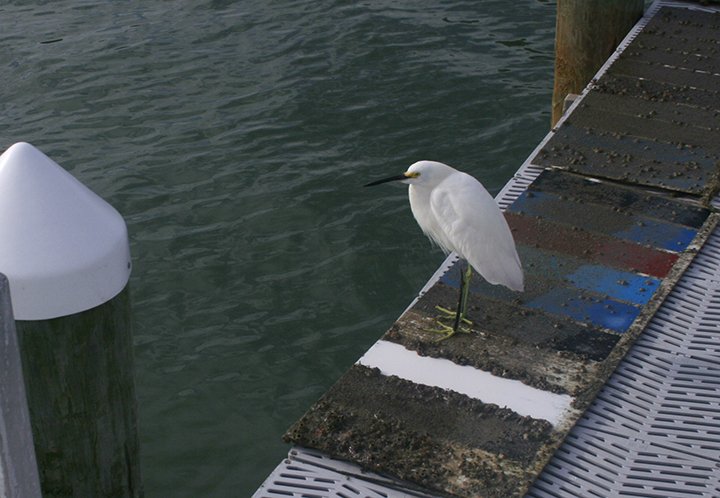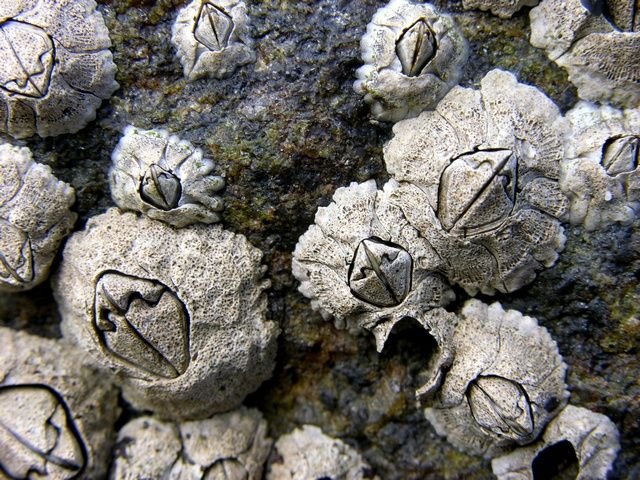
While gathering data for this months bottom paint report, my research, as often happens, took a strange turn. There clearly is something about the whiff of solvents and fungicides that stirs my neural cells into a minestrone soup. I became obsessed with fouling organisms, those small, crusty invertebrates that arrive uninvited, latch on to our boats hull and call it their home.
The oceanic equivalent of implacable in-laws, they addled me to no end. Do they ever stop eating? Do they ever sleep? Why wont they leave my boat alone? Their unrelenting click, click, clicks on the hull kept me up at night. An obsession bordering on madness set in. My only comfort was that barnacles on the brain can have interesting side effects, like an idea that changes our view of the world.
For seven years, long before his famous voyages aboard HMS Beagle, Charles Darwin immersed himself in the study of barnacles, and with each passing year, he became more and more confounded. Rebecca Stott describes Darwins almost single-minded obsession with the barnacle in her compelling book Darwin and the Barnacle.
To a sailor, its no wonder why a nineteenth-century scientist would dedicate himself to the study of something so small and seemingly insignificant. Even today, in the age of slippery, high-speed ships, the tiny creatures induce fuel-guzzling drag that peels away shipping profits. During Darwins time, more than swift passages were at stake. How many ships were lost at sea for want of an extra knot?
Darwins life overlapped with the last decades of the age of sail, when the first steel ships were venturing deep into one of the barnacles favorite habitats, warm, biologically rich seas. The usual protection against fouling were thin sheets of copper nailed to a wooden hull, but steel hulls complicated this approach. Chemists began tinkering with copper-laced coatings (New England’sTarr & Wonsonwere among the early innovators) while biologists studied the barnacles structure, documenting every weakness.
As Darwin and his cohorts in Edinburgh, Scotland grew to understand the barnacles life-cycle, they were convinced that this was an exceptional creature that defied normal categorization. The acorn barnacle goes through three distinct stages during its life. The tiny larvae, appearing like alien shrimp-crabs, are ejected from their armored parent and wander the sea as nauplii, a form of zooplankton. The nauplii pass through six stages of growth, finally morphing into a cyprid form with a sensitive, sticky antennae that is ideally suited for the cyprids primary task-finding a place to settle among others of its kind.

The act of settling is equally impressive-no messing around with surveys, mortgage notes, or down payments. The cyprid picks a spot to land, secretes an extremely tenacious, protein-based cement, moults again, and rotates like a slow-motion break dancer until it is standing on its head.
Once anchored, the acorn barnacle begins arming itself against predators by forming its six-plated shell. Extending from this cone-like shell, are cirri, or legs, now arranged perfectly for sweeping the water and gathering plankton for food. As a barnacle gorges on what the tide delivers, it grows at a staggering rate. In some fertile waters like our test site, the diameter of an acorn barnacle can triple, or even quadruple in less than three weeks.
But the amazing fact about barnacles that will surely make me winner on Trivia Night pertains to reproduction. The adult acorn barnacle is renowned among biologists for its prodigious reproductive organ, about eight times the size of its body, making it the longest penis in proportion to body size in the animal kingdom. If the barnacle were a man, hed have a forty-foot schlong-and that’s as far as we’ll go with that.
As if this werent advantage enough, the creatures reproductive prowess is abetted by its ability to be simultaneously male and female. Whereever two barnacles lie in proximity, there is potential for a mating pair. The act of sexual reproduction, which humans have so successfully constrained with social convention, is about as streamlined as it gets. Soon enough, larvae are ejected into the tide and the process begins anew.
The more I learned about acorn barnacles, the more I wondered about Darwins feelings toward them. Did he really, as he once wrote to his cousin, hate a barnacle as no man ever did. Could Darwin ever loathe such a creature, so formidable, so efficient, so well-equipped to survive? I doubt it. In my mind, he had an abiding envy for the tiny crustacean, and I can see no fault in that.





































